Turning 33 – Reflections on Success, Travel, Generalism and Relationships
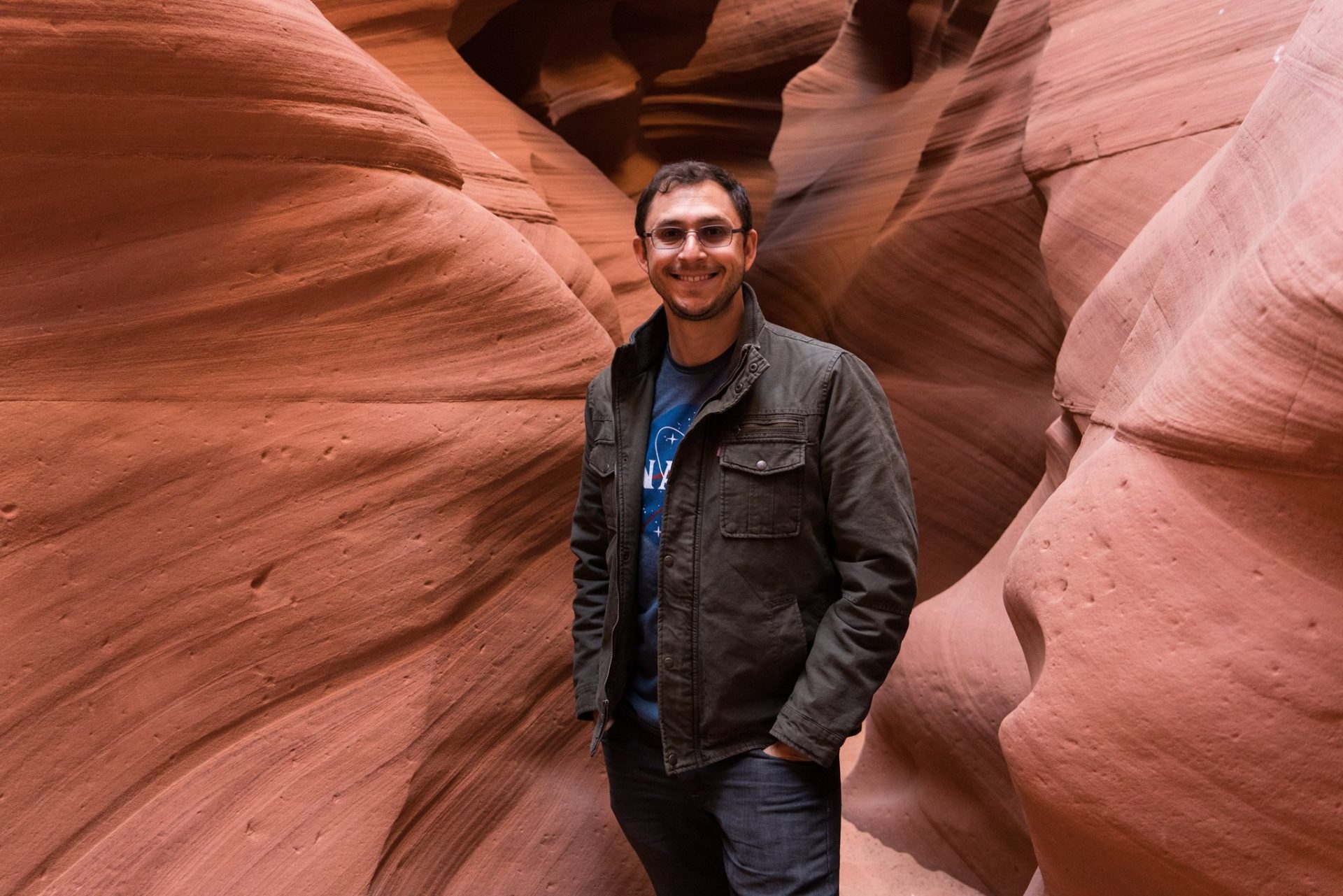
Thirty-three has rushed up on me. This past year has been a mad-dash full of wonderful achievements, interesting challenges, some wonderful travel, and significant personal growth all paired with a number of areas where I had hoped to make headway but haven’t. As long-time readers know, every year I write a birthday post that contains general reflections, musings, and observations drawn from the previous year. I find myself significantly more centered than I was at 30, but also standing on the cusp, or perhaps already well into a new period of transition. This year is slightly different, as it comes on the tail end of the publication of my new book, Practical Curiosity: The Guide to Life, Love & Travel with an extensive expansion of the topics and musings outlined in these annual posts.
For those who don’t have a copy of Practical Curiosity and are interested in picking one up. To celebrate my birthday I’m temporarily running a special on Amazon for the ebook version. It’ll be $.99 for the next 24 hours (or Euro etc. if you go to your local Amazon.de/.co.uk/.fr etc version). After that, it will increase by increments over the remainder of the week before returning to the normal $7.99 price on Thursday. If you’re in the US and want a US ebook the link is here.
I hope you’ll enjoy these thoughts and take them for what they are – an attempt to share the world as I see it and how I relate to it. You can view my 32nd birthday post here, 31st birthday post here, my more detailed 30th birthday post here, my musings on turning 29 here, or 28 here. As well as a long-forgotten blog post written on my 23rd birthday (yeah, I’ve been blogging that long) which you can view here.
**This post is more than 7,000 words. Feel free to skip to the sub-titles that most interest you.
Success
Like many highly motivated and driven people, I’m painfully bad about cataloging my success. I inevitably end up aggressively chasing the next challenge or adventure, a bit like a child chasing new toys, past “must have” toys left scattered about the room, largely forgotten after a few hours of enjoyment. If left to my own devices, I’ll inevitably chase, achieve (hopefully), relish for a day or two, and then pivot to some new adventure or focus. All of which is decent enough and a core part of how I’m hardwired and what drives me. It’s the fuel in the tank and is healthy. The problem arises, however, when I fail to properly step back and focus on the adverse, the underachieved, or where I could have done more. I explored this a bit in my imposter syndrome section last year, but have further expanded my understanding of how I’m hardwired; how I need to carefully navigate a strong balance – particularly in regard to my photography. Hand-in-hand with this is learning to be a fair judge while calling bullshit where and when I need to.
Practical Curiosity
As I sat writing last year’s birthday post, the early concept for my book started to take shape. For years I’ve been encouraged by readers, friends, and family to write a book. For years I’ve held back for a variety of different reasons. Watching my Dad go through the process of reaching out to publishers and eventually self-publishing a number of books, I was acutely aware of the headaches associated with the process and the bottlenecks. I also know that I tend to cycle in 4-8 month periods of productivity for a project before interest wanes and I go from creator-mode to maintainer-mode. Further, I was torn on what to write. I toyed with the idea of funny adventures and reflections. I also briefly considered wandering down the ill-advised path toward a travel guide.
Ultimately, by around May and partially inspired by a number of podcast interviews with authors who reflected on their process, I dove into an intensive two and a half months of writing. I set a goal of 20,000 words that would convert to about 100 pages and started writing. I focused heavily on structuring the entire process in a way that eliminated bottlenecks, accelerated my ability to write the book, and reminded myself that 20,000 words is actually not a terribly huge volume of text to write. These blog posts in and of themselves often stretch into the 3 – 4,000-word range.
By writing a book divided into sections, modeled in part on these birthday posts and a number of my favorite or most impactful blog posts, the book came together rapidly and bypassed areas that cause significant bog-down and normally draw authors’ process out. These often include the complexities of needing to maintain chronology, character development, and identical voice throughout the duration of a traditional non-fiction.
By structuring Practical Curiosity as I did, each section was written in the voice or tone most fitting to that particular narrative. First person narratives sit section- by-section alongside 3rd person or more academic reflections or thought exercises. Roughly 35% of the final book, which blew past my 20,000-word goal and ended up being over 50,000 words, is drawn from blog posts re-written, expanded, and elaborated upon. While several additional sections were added later, by mid-July my first proof copies went out to volunteers. The rest of the time between August and publication in October was spent editing, re-editing, and enlisting a professional book designer which made an incredible difference in the quality, look, and feel of the final product.
Taking it live was one of the more difficult things I’ve done recently and something I’m as proud of as I am the book itself. On the one hand, I was excited and eager to share the final result. On the other,some elements are deeply personal, and that imposter syndrome – that fear of putting something out there with the belief it was good and meaningful and persuasive at the risk of finding it was none of those things – was terrifying. In launching it globally, via Amazon, in print and ebook form I was pushing it out to a wide audience outside of my immediate network. I was also exposing it to people who, as with any piece of art or text or work, would dislike it and fail to have it speak to them. It took all my focus to not only launch it but then to invest effort and energy in promoting it. To be loud, to be proud, and to draw attention to the book vs. clicking ‘publish’, and then hiding as I looked on through spread fingers, passively waiting to see if someone picked it up.
The response has been fantastic. The book spent more than a day in the top 100 list of new non-fiction ebooks on Amazon and as a sub-category bestseller for nearly a week. More than 500 people have purchased a copy of the book with gradual but organic growth that shows people are recommending it and that individuals outside my extended network are picking up the book and recommending it. All of which is, for me, incredible given I don’t have a publisher, have not heavily promoted it, am not doing tours, and don’t have a massive advertising campaign driving it. Multiple people have reached out directly to tell me a variation of, “This book came right at an important time for me, it really helped me with issues I was tackling and has had a deeply meaningful impact.” This in and of itself has been an incredible feeling and embodies the essence of why I wrote the book and what I hoped to accomplish with it.
If you enjoy these blog posts and haven’t yet, do consider picking up a copy as it’s essentially a 210-page in-depth version of many of the topics that go hand-in-hand with this post. To those of you who have picked up a copy, recommended it to friends, left a review, or offered me feedback – THANK YOU! Truly. It has been incredible and the support I’ve received throughout the project has been inspiring and deeply motivating.
Podcasts / YouTube / Flickr
While my photography is my primary focus, I’ve also been dabbling and experimenting with new creative outlets; increasing youtube content, learning more about the editing process, and leveraging the my new camera’s ability to capture incredible 4k footage to create a new style of video for youtube. This has been enhanced by discovering and learning how to edit in Black Magic Design’s great (and free) video editor Davinci Resolve 14.
My Denmark 101 videos continue to be a significant draw and have led to several instances out and about Copenhagen where people have recognized me and stopped me to comment on the videos. The channel itself also surpassed 1.7 million lifetime views recently which, quite frankly, is staggering. In a given month my videos are averaging more than 25,000 views and 45,000+ minutes watched.
Meanwhile, I have edited the audio from my Denmark 101 series and published them as a podcast. This has also continued to grow and develop legs of its own. Earlier this month the podcast passed the 20,000 listen mark on Lybsn which excludes iOS devices where the bulk of my listens are likely taking place (tracked in iTunes but without comprehensive stats).
Flickr also continues to be a wonderful outlet for sharing my photography and has, on average, resulted in roughly 75,000 image views per month over the last year which puts total lifetime views at just over 4.7 million. This is something that also leaves me a bit bewildered and flabbergasted.
Each of these outlets is a casual hobby and sandbox where I’m experimenting, playing, and somewhat organically sharing with minimal promotion. The results and feedback are a wonderful secondary benefit from deciding to push myself to put my content out there and share it with the world in whatever state it may be. And to be fair, I also get told it’s absolute shit, or to go fuck myself on a semi-regular basis as well. But that’s also healthy in its own right and has been a pivotal component in driving me to constantly put more out, to generate new content, and that there is value in what I’m creating.
You often get a lot of people overly focused on chasing the likes or views themselves which similarly has a tendency to generate negative behaviors or vulnerability. The key, I’ve found, is to reverse how you look at it. I’m inspired to create because I want to share it, but the reception to that share isn’t the primary benefit. The primary benefit is that it inspires me to practice my craft, to sit down and edit/create/generate, and to refine the quality of what I put out there. That leads me to try new things, to explore, and to invest time and energy in the process which motivates travel, meeting new people, and keeping my mind curious/sharp. It also nudges me to go out, consume other creator’s content, and leads me to give them positive/direct feedback when their content inspires or resonates. Of course, that process does come with some nuance and challenges, especially when perfectionistic tendencies kick in.
Chasing Nonsense
From day-to-day I pivot from being fantastically pleased with the improvements in my photography, to deeply critical and frustrated with its failings. Like any creative outlet or craft, it’s a natural part of the process. Dancing from spikes with perceived mastery that then meet with new levels of insight or awareness and that in turn translates into a crushing collapse of confidence and a sense of sophomoric embarrassment.
One of my goals last year was to spend money to submit my photos to more contests and competitions and to promote it and push it out there. I also upgraded to a new camera which proceeded two weeks later to take a swim in the only camera-related accident I’ve ever had. Luckily it survived mostly intact and I’ve been happily shooting on it since. I’ve also been binging on a number of fantastic landscape photography vlogs the likes of which include Thomas Heaton, Adam Gibbs, Nigel Danson, Mads Peter Iversen, and Sean Tucker.
For years I (and I think many aspiring photographers) have struggled with many of the too-perfect shots you see out there and a deep frustration with my inability to capture natural shots that matched. In recent years I’ve learned enough about the process and flow to be able to quickly identify when some sort of heavy edit has been done or something isn’t natural. What I’ve realized, in part through the great illustrations and insights into how they shoot and edit, and in part via my own experience, is that a lot of my frustration has stemmed from comparing apples and potatoes. While the vloggers above are all honest, clearly document their creative process, and don’t seek to mislead, a significant percentage of the photos featured in magazines, around the web, in highly prestigious photo competitions, and even by National Geographic are heavily modified images. Typically shared by dishonest photographers passing them off as something they’re not, and presented to judging panels that seem to lack advanced technical awareness of the process (old film people? Not actually photographers themselves? I don’t know).
The end result is that a lot of the photos passed off as single-shot photos with basic edits to enrich the accuracy of the photo to better match the real scene, are actually something totally different. This often includes replacing the sky with a photo taken elsewhere/at an entirely different time, or even at roughly the same time but as a separate photo. It includes ‘photoshop-ing’ in moons similarly taken elsewhere, or taking three different photos simultaneously with varying focus points and then manually combining the three into one photo for a single final photo that’s crisp from front to back. This usually goes hand in hand with heavy edits removing cars, people, leaves, buildings, trees, you name it.
The output is often incredible photos and it’s a great niche within the photography segment. The problem is that when these are misrepresented, it results in two issues I find deeply frustrating. First, it trains the audience to assume that these heavily edited or manufactured composite shots are “real” photos capturing a moment in time and drawn from the camera. Second, for aspiring photographers looking for insights into how to create better photos, it creates an unreal photo aesthetic and presents shots that are unlikely, incredibly rare, and meaningful or impossible to achieve, as mundane, typical, or attainable and the status quo.
What’s my takeaway here? While I still struggle with frustrations stemming from being unable to achieve the drama, crispness, and compelling nature of many of the shots I see, I’m now much better about stepping back, looking critically, and ensuring that when I look at setting examples to aspire towards or draw inspiration from, that I’m comparing apples to apples. I’ve also been passionately diving into expanding my technical understanding of the capture and editing side of the process and absolutely love using photography as an active muse to get me out to incredible destinations, fully soaking in the moment. Similarly, the extensive process of editing thousands of photos per year gives me a creative outlet and meditative downtime after work that blends the soothing association with the places I visited/photographed with a simultaneously highly technical, but also semi-repetitive, act of editing.
This has also extended to the earlier goal of submitting to photo competitions. I find myself a bit torn. On the one hand, aspiring towards the caliber of photos ultimately selected and the exposure that goes with highly prestigious awards is a lofty goal and a great benchmark. It’s also an excellent way to engage in a wider community and a strong inspiration to really step my photos up and see if I can progress to a point where I can put the fruits of my hobby up against the output of some of the world’s best professional photographers.
At the same time, I find myself a bit disenfranchised. In part because the mindset that drives the selection and inclusion process for many of the top awards is the same concept over execution focus that drives modern and conceptual art. Photos that get selected are just as often dreadful throwaways with a sub-par execution and cliche narrative as they are incredible pieces of art that have technical precision blended with a dynamic and compelling story. Many are also outright plagiarisms, egregious misrepresentations in line with the above, or stacked decks and the photography industry seems either ill-equipped or unmotivated to address the issue. The latest incarnation of the photographic community is, however, gradually maturing and standardizing in response to the prolific rise of advanced editing software and digital cameras. It will be interesting to see how this continues to mature, and what quality enhancements eventually kick in. In the interim, I’ve re-focused most of my efforts and funds on exciting trips, gear, and the art itself.
Career Development
For several reasons, I rarely mention my “day job” here on the blog. However, as it has played a pivotal role in a lot of my growth over the last year, I’ll dive into a few more specifics. The company I work for is one of the leading digital advertising technology companies in the world. We’re going up against the likes of Google, Facebook, Adobe, Amazon and other ad tech behemoths and not only holding our own but excelling. Over the three years I’ve been there, I’ve been on board for a period of fantastic growth and expansion. The company has added more than six new countries, an entire wing to its product suite, and more than 300 new employees across a far more global footprint. It has also gone through a significant maturation process as it pivots from startup to an established global brand. During my days in M&A I had the opportunity to watch and discuss these types of transitions from the outside, but the chance to be immersed in it has been fascinating and deeply educational.
After joining the organization as the junior member of the Product Marketing team, I was promoted a year and a half ago to Global Marketing Manager, and then this previous year stepped into the role of Head of Global Product Marketing for the organization. While focused on Product Marketing, due to the relatively small nature of our team and extensive global responsibility, I have spent the past year and a half wearing an extensive mixture of hats. I’ve had the opportunity to sit in on and help engage with key strategic and brand conversations, to shape keynotes with our c-level executives, and to be heavily engaged in the PR process and our global growth efforts. The promotion to Head of Global Product Marketing reflects the first time I’ll have direct reports and serve as a dedicated manager. This is a key area of my skillset that I’m eager to embrace and flesh out, but also one where I had previously dragged my feet a bit.
One of the essential areas I prioritize in life is my own variation on work-life balance. That means that while I’m still probably a workaholic, I blend that work overload with a mixture of career and personal projects. To that end, it means having the mental bandwidth and energy to love what I’m doing at work, but also to come home and to have space and creative juice left to invest in personal projects and my own internal personal development. To that end, I’ve held back from actively chasing a leadership or management role. Not because I’ve found the thought unattractive or excessively intimidating, but because I have a firm appreciation and respect for the significant shift that comes with the mental load and sense of responsibilities tied to the role. Particularly for a highly contextually aware and empathic personality profile like mine.
As part of an extensive three-day leadership development program, I had the opportunity to take the Gallup Clifton Strength tests. Ordinarily. I’m a bit wary of and have had mixed experiences with these types of tests. In this context, however, the results were interesting and illuminating. My top five in order of dominance were Individualization, Input, Responsibility, Restorative, and Ideation.
- Individualization gets expressed as, “You instinctively observe each person’s style, each person’s motivation, how each thinks, and how each
builds relationships.” - Input as, “You are inquisitive. You collect things. You might collect information—words, facts, books, and quotations … you collect it because it interests you. And yours is the kind of mind that finds so many things interesting. The world is exciting precisely because of its infinite variety and complexity.”,
- Responsibility as, “Your responsibility theme forces you to take psychological ownership for anything you commit to, and whether large or small, you feel emotionally bound to follow it through to completion. Your good name depends on it. If for some reason you cannot deliver, you automatically start to look for ways to make it up to the other person.”
- Restorative as, “You love to solve problems. Whereas some are dismayed when they encounter yet another breakdown, you can be energized by it. You enjoy the challenge of analyzing the symptoms, identifying what is wrong, and finding the solution. You may prefer practical problems or conceptual ones or personal ones.”
- Ideation as, “You are fascinated by ideas. What is an idea? An idea is a concept, the best explanation of the most events. You are delighted when you discover beneath the complex surface an elegantly simple concept to explain why things are the way they are. An idea is a connection. Yours is the kind of mind that is always looking for connections, and so you are intrigued when seemingly disparate phenomena can be linked by an obscure connection. An idea is a new perspective on familiar challenges.”
I find these to be a fascinating lens through which I can explore my relationship with leadership, my focus on maintaining work/life balance and my creative space, and of course the core motivations which drive me to write these annual posts and the core themes that shaped Practical Curiosity. The results mirror my own inner balancing act between the pursuit of, and analysis of, knowledge paired with a core sense of responsibility to see things through and facilitate equilibrium. It gives me a much more expansive and robust frame of reference and perspective, but also tends to lead to people misunderstanding periods of reflection or situational analysis as critical critique or insecurity. It also puts me in stark contrast to people with a propensity for either immediate action with little research or consideration for context or ramifications on the one side, and on the other individuals who need excessive individualization, research and preparation on the other in a limited narrow band.
As my professional competence and belief in myself continues to grow and internalize, I find myself more comfortable navigating the ebb and flow of maintaining professional and personal balance. This next year promises to be an interesting challenge professionally as I work to re-train old habits, behaviors and the way I schedule my work day to not only achieve my immediate goals and tackle what’s delegated my way, but to initiate, drive strategy more pro-actively and with more extensive ownership, while also re-shuffling my daily calendar to account for the blend of meetings and people-management related roles and tasks. It’s an interesting challenge, suddenly pivoting and navigating the need to deliver more content than ever, to a wider array of stakeholders than ever, while simultaneously knowing I need to step back, carve out that 30-40% of the day for the people and strategy side of the role. The temptation and classic mistake is, of course, to just tack an extra 30% on to the end of the day, something I’m carefully working to avoid. It’s a fascinating period of transition both personally and in my career. One which I anticipate will be old hat and established by this time next year. But, it’s also a fun challenge to be fully aware of and reflect on as I navigate one of the transition periods that seems to most often lead to stress, burnout, or overload among friends and peers.
Managing Stress and Finding Balance
Over the past year I’ve seen a lot of friends and colleagues go down with varying types of stress. Some have been overt. Others have managed to stay the course but at significant emotional or physical cost. Similarly, the responsibilities and stresses in my own day-to-day work have gradually increased. While I find myself well positioned to navigate these stresses, there are a few key elements that I’ve picked up on and am digesting.
My job search and the related struggle in 2013/2014 was an incredible growth experience. The uncertainty that related and the challenge to my own personal narrative and competence was deeply challenging and at times debilitating. It ultimately had an impact on my health, caused me to question my intelligence, capabilities, competence, and decisions at a deep level. Ultimately, it also ended up being a fantastic growth opportunity and I came out of it with a wealth of new insights, humbled, far more centered, and with a core belief in myself far beyond what I had when I began the process.
It was the latest in a series of experiences which have helped me settle into myself. Trust myself. Embrace myself. A process which is on-going with significant room for improvement, but which has been integrally helped by my dance, my travels abroad – particularly my solo travels, and my time spent living as a sojourner abroad. It also taught me that no matter how capable, intelligent, motivated, qualified, or talented we may be – obstacles pop up and rejection occurs. This brings with it an acceptance of the realization that balance and investment in that balance is essential.
It brings the realization that no matter how hard you work, how endless the time investment, or the quality of your output – there’s always more you can do, some small mistake you can beat yourself up over, or unexpected factor outside your control that has the potential to unravel it all. Instead, it’s given me the focus I need to accept that I need to be measured, to do the best I can, but within reasonable confines and to remember – what I do is important, but it’s not a life and death situation. Mistakes are ok. Beyond that, drawing a line in the sand is not only ok and acceptable, it’s actually healthy and in the best interests of me, my employer, and my peers.
Having said that though, I’m also acutely aware that I have to constantly monitor myself and do self-work to ensure that projecting the image of stability and well-controlled stress isn’t the same as actually embracing that stability and controlled stress. As I do, I’ve embraced the importance of taking walks, of dancing, and of being aware of that knot in my shoulders and back that tells me I’m holding on too tightly to things and am not processing properly. In those moments I focus on the importance of being diligent of where my mind is, of managing my behaviors where I can, and of being kind to myself where possible, catching my inner narrative and working to re-shape it. It’s a journey, and it’s a challenge. It’s also something that I don’t think you ever master. Especially if you’re rapidly evolving and challenging yourself as an individual – you’ll always find new areas and levels of discomfort as you grow and face new levels of vulnerability.
For friends navigating stages of this process, or facing other challenges related to managing your own stress, performance anxiety, imposter syndrome, and the brutal mental and emotional load of being highly intelligent high achievers I encourage you to step back and reflect. Take time to embrace a bird’s eye view of the realities of the situation. Seek out friends and talk to them. Share with them your fears and frustrations and vulnerabilities tied to that mental voice and then listen and work to internalize the result of those conversations. Remind yourself and truly stress to yourself the importance of how you frame things. How you tackle each crisis and the realities that if you destroy your health, or your personal life, or your ability and energy to work passionately – that you’ve sacrificed the forest for the sapling.
Evolving Identities
While this overlaps heavily with success, it’s part of my life journey and intimately connected with my travels, so I’ll cover it here. The past three years have been a fascinating period of transition. Now, on the cusp of 33, I feel acutely the full force of that transition. Key elements of my daily life, routine, and personal identity which have largely held consistent for nearly a third of my life, and the majority of my adult life, are starting to change. The result is unsettling and creates interesting voids and confusion in my self-narrative and the identity I project and define myself through.
Since taking my first major solo trip at 22 after completing my Bachelors, budget backpacking and hostel travel have been an integral part of my identity. It was a community, a mentality, and a point of differentiation and muse that weighed heavily on all aspects of my life, including my dating, my reading and the story I told as an individual. The concept of growing weary of elements of that identity and scene, or having it evolve was something I acknowledged would likely happen but quite frankly didn’t expect to occur until much later. The sheer excitement of meeting new people, of having traveler’s conversations, and of party-filled night after party-filled night with incredible people and dynamic stories are spectacular.
But, with time, the novelty and excitement have tapered. This is in no way to say that my wanderlust is sated or that travel is no longer a central part of my identity. Rather, that as in my personal social life, the novelty of those conversations has been replaced with a nearly robotic script. That party-filled nights remain exciting but as an occasional outlet, not a nightly default. During my early backpacking trips nearly every night consisted of drinking and exploring the nightlife of some new exotic city, nightlife, and culture. Over the last couple of years, these trips have suddenly pivoted. I’m ok with and even actively inclined to seek out a hotel room or a private room. On most recent trips I’ve had one or two beers in total, if at all.
This mirrors other elements of my life. Where for years, particularly being single for an extended period of time, I relished the late-bloomers social delights of the bars, nights out, and weekends dedicated to the bars, hangovers, and the intense social dynamism of a jam-packed social calendar, this past year has spent working to re-focus and re-tool what I do. I don’t think there’s anything particularly novel about this transition – I see it in friends undergoing their own variation, but still heavily immersed in the same maturation. It also mirrors elements of what many friends went through after finishing their Bachelors back in the US. But, that doesn’t make it any less interesting to observe and to be aware of.
With it also comes a sense of confusion and loss. As I retire or diminish my involvement in some aspects of life – trading a weekend out at the bars for nights in on my own contently watching movies or editing photos, or a trip to a museum, or a night at the ballet – it’s a challenge to accept the period of transition and the shifts that go with it. Large gatherings or big group activities such as house parties and the like which are great for maintaining a vibrant and diverse mixture of friends which are constantly energized by new faces and new people, give way to new activities that have a rich but different and more muted energy. There’s also the struggle of knowing what I don’t want to do, but then feeling as though there’s no new passion or outlet to replace it. Or, even if there is, perhaps key elements of my core group of friends don’t share that particular interest, or are not, themselves, ready to make that pivot.
At the same time, I find myself stepping back and asking myself what narrative I want to tell during this next stage of my life. I’m no longer Alex Berger the backpacker, or Alex Berger the academic, Alex Berger the travel blogger etc. – of course many remain the same. I’m still Alex Berger the traveler, Alex Berger the photographer, Alex Berger the dancer, etc. but do I want to be Alex Berger the author? Alex Berger the entrepreneur? Alex Berger the museum conneseur? Do I replace my Friday night at the bar with a Friday night dancing, with talks and seminars, with music, with relaxation at home? How do I cultivate my existing relationships while developing new ones to align with these interests? And what does this mean for how I date, meet women, and socialize. Particularly in a culture like Denmark where so much of the dating culture is heavily tied to bars, drinking, or work?
Of course, it all happens organically. But, I’m also a firm believer that at any organic transition point in our lives we have an opportunity to shape the direction we head in. The challenge is it takes recognizing and embracing that transition and finding those new passions while accepting that it’s OK to let others which have been an essential part of my identity for a decade evolve and diminish in prominence.
I also see that it’s a time of heavy social change. That’s not to say that I’ve in any way lost my core peer group. Quite the contrary. It continues to grow and become deeper and more connected. But, the activities that facilitated much of what we did have changed. Similarly, each of our lives have also changed – from some finding live, marriage, and children to others taking on new adventures which take them away from Denmark. It means that nurturing those established bonds requires a different type of interaction and effort. And, it means that in other cases previously strong bonds diminish or in some cases drift apart as the ebb and flow of life pull us down different paths.
To those of you who find yourselves in a similar process. Embrace the period of change. Work to actively shape how you engage with the period of transition. Ask yourself what you want to do and try new things – but do it in a way that doesn’t stress you or feel overwhelming when it takes time. Embrace that we are constantly evolving as individuals and that with the greatest periods of discovery come the most significant periods of indecision and confusion. It may be another year or two until I have more completely settled into a new routine and discovered a new driving passion or hobby which will, for a while at least, be a core way of defining my own personal narrative and identity – and that’s not only ok, it’s an essential part of growth.
Love and Lust
From last year’s post, “In many ways this year has been quite static for me. Everything I’ve spoken to in my 30th and 31st birthday reflection posts still holds true and are in play. I find myself struggling to carve out the time to date properly. This has been an on-going challenge. After so many years spent “single”, carving out regular time for a proper relationship requires taking a lot of other important areas of focus off the table. That’s not a bad thing, or something I’m unwilling to do. It’s just an added complexity which I think often gets talked about for “career women”, but which applies and is fundamentally relevant for both genders. Commitment to a relationship, especially as a man who values relationships and equity, means compromise and sacrifice on both parts.”
The trend holds true for 33. While I had intended to be more pro-active and overt in my dating, I found that with the launch of the book, travels, and significant changes at work I not only didn’t but actually probably slipped backward a bit. Not only was I largely ineffectual at stepping up my dating and making more time for it. I made significantly less time for it, with the pivot away from the bars and related date-friendly environments, and a conscious effort to avoid relying on elements of the dance scene as a primary means for meeting women the end result was 32 wasn’t very active. That’s not to say that I didn’t meet or re-connect with several incredible women. But, rather, that my goal of being more pro-active, of seeking out new locations and settings to meet potential matches, and making dating more of a priority fell by the wayside or went nowhere.
So, for 33, the goal is to step things up a bit. Dance is back as an avenue. I’ll also double down on exploring a number of dating apps, and making a strong effort to seek out and blend my pursuit of new avenues for my social calendar with potential opportunities for further dating to mix things up.
Stop Making Own Goals
One of the things that I find the most challenging and difficult to watch is friends, colleagues, and peers who make their lives radically more painful and difficult. Time and time again in their professional and relational lives they make a staggering number of own goals, repeating the same mistakes over and over. I realize that this is heavily baked into many people’s personalities and their more impulsive tendencies. But, good god, people spend an inordinate amount of time, blood, sweat, and tears on repeating mistakes, second-guessing well thought out decisions, and not trusting their intuition. Far too often it feels like watching people stand beneath a scalding hot shower head, refusing to step back or adjust the temperature handle, turning on the scalding water, crying out in pain, slamming it closed again, pausing just long enough for sensation to return, before doing it all over again.
Humbled by China
In late January and early February of this year David (my brother) and I did a two and a half week trip to Southeastern China. It was our first time in that part of China and our second time in China with the first having been 8 days in March of last year in/around Beijing and Xi’an. In general, that trip was much easier than expected and went very smoothly. This time? We got our ass kicked. You can watch the vlogs here. In truth, I haven’t had a trip that challenging or uncomfortable in a long time. There were several points where, had I been on my own, I’d have tossed in the towel and booked a flight to somewhere more accessible.
We’re both experienced travelers and, in truth, that also made us both a bit cocky. We did minimal research, didn’t properly prepare for the climate, got caught in some of the year’s coldest weather and an abnormal cold spell, and got absolutely spanked by Tet / Chinese New Year. Trains, flights, and buses were heavily sold out with minimal availability due to Tet, which left us with only more expensive and limited options, annoying logistical challenges and vast distances to cover. All while trying to navigate in regions that don’t seem to get many western tourists and where not only was the English language level extremely low, but the ability to communicate beyond that also very challenging. Even when there’s a low level of English fluency in an area I’m visiting I still normally manage to get by without any issue.
We still managed to make it work in China, in no small part because we met a lot of wonderful locals who were patient, kind, and wonderfully helpful. But good god. Combining offseason, with sold-out transport, a vastly different language and culture, and significant communication barriers made for a humbling and challenging adventure. We also managed to get rejected at the border/denied re-boarding on our sleeper train to Vietnam (a first for me). We also managed to get stuck on top of one of the mountains which resulted in a rather dangerous hour long rapid descent down frozen snow-covered stairs, with the last 25 minutes done in the dark by iphone flashlight where we managed to reach a bus stop and catch the last bus out of the national park.
Luckily the nature we saw was spectacular and well worth it. The parks were almost empty which was incredible, and the experience itself while humbling and challenging was actually – looking back, and as is often the case – one hell of a rich adventure. Some of the unexpected detours also led us to discover several incredible spots we’d otherwise not have seen. I’ll need a while to recharge before I head back to China, but having said that, it did prepare me (a bit) and pique my curiosity for a trip further west out towards some of the less developed regions in China.
Closing Thoughts
As I’m rapidly approaching the 7,000-word mark and in danger of writing a sequel to Practical Curiosity in the process, I’ll leave off there. Normally I’d dive deeper into reflections on travel and relationships, but those are heavily covered in Practical Curiosity.
Above all, I’m incredibly grateful for the spectacular support that flows my way from all of you, from my incredible group of friends, and the endless love and support of my brother and parents. With so much uncertainty in the world at large, so many challenges, and with many friends losing loved ones over this past year, I’m profoundly grateful for each moment we get to spend together.
For those who don’t have a copy of Practical Curiosity and are interested in picking one up. To celebrate my birthday I’ve temporarily run a special on Amazon for the ebook version. It’ll be $.99 cents for the next 24 hours (or Euro etc. if you go to your local Amazon.de/.co.uk/.fr etc version) and then increase by increments over the remainder of the week before returning to the normal $7.99 price on Thursday. If you’re in the US/want a US ebook the link is here.
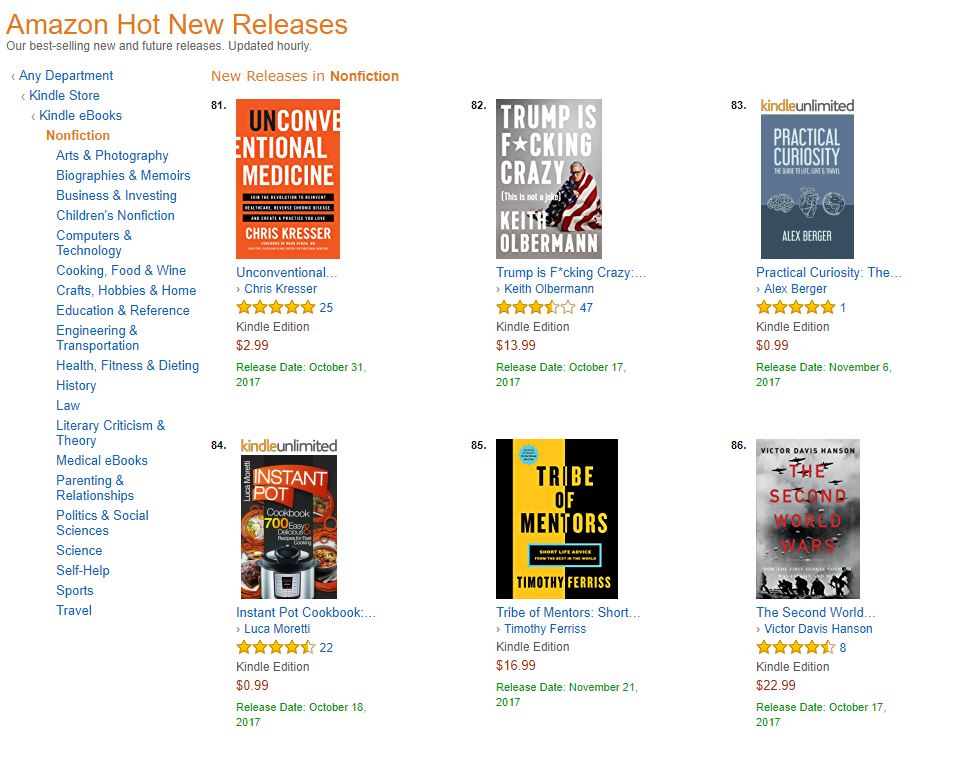
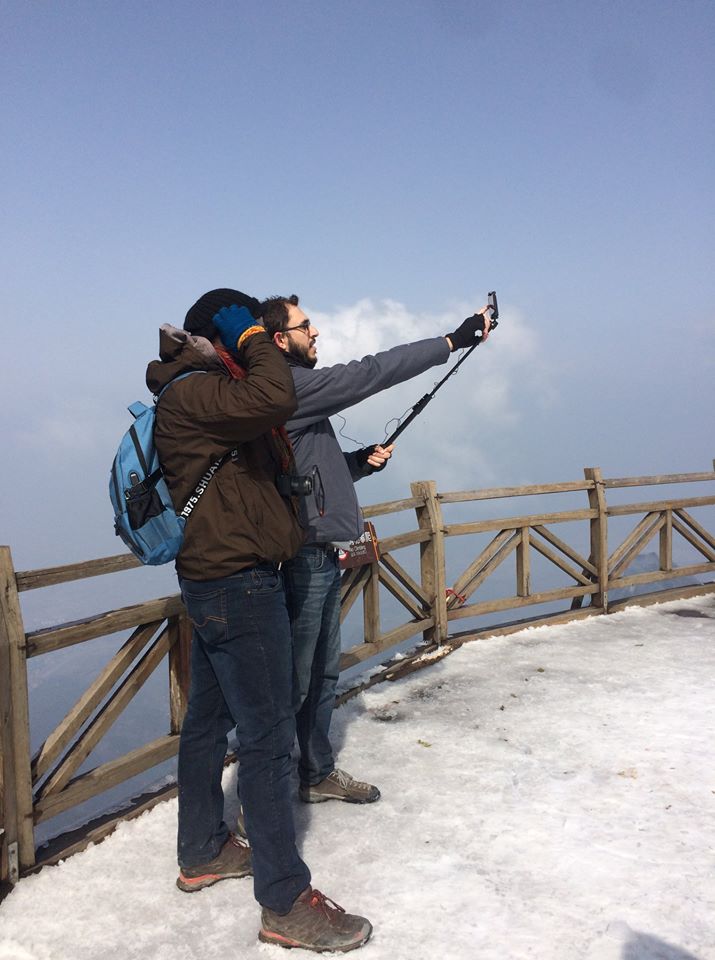
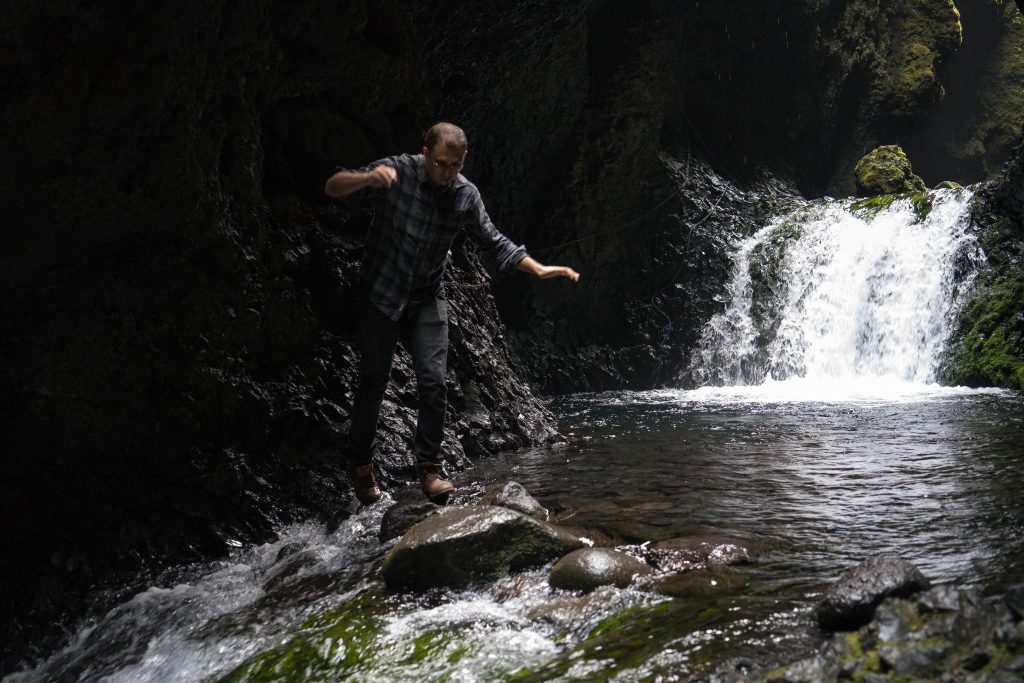

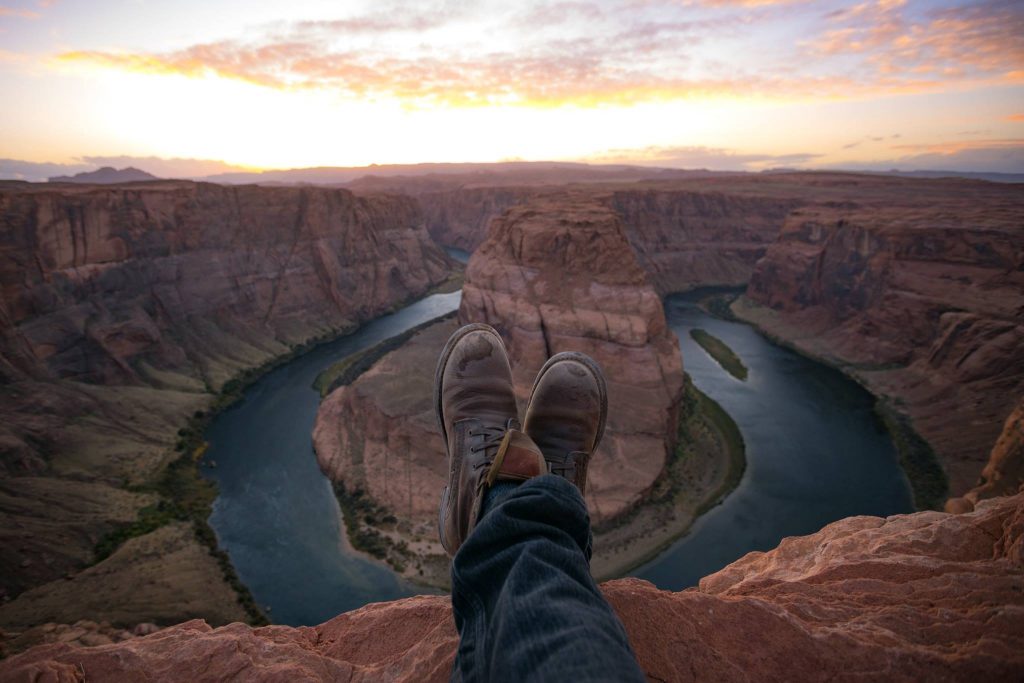
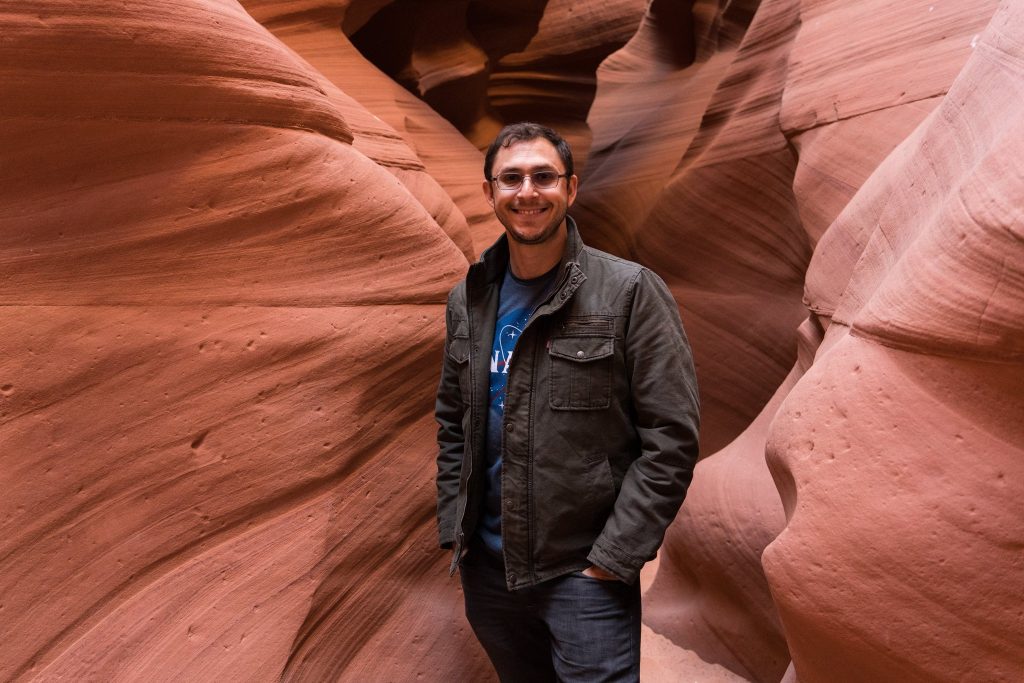
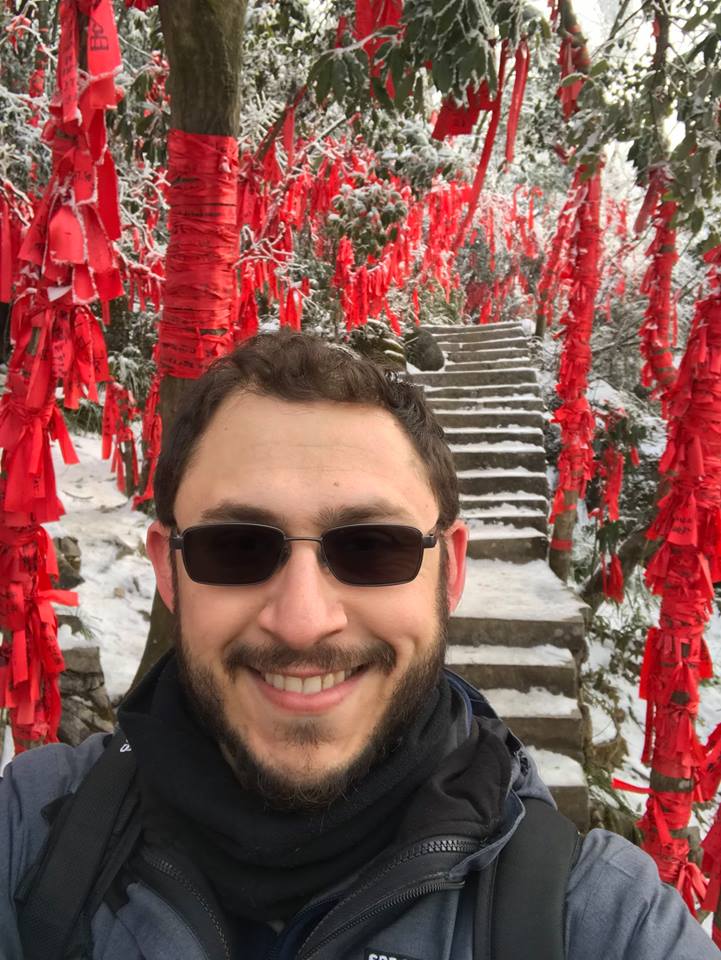
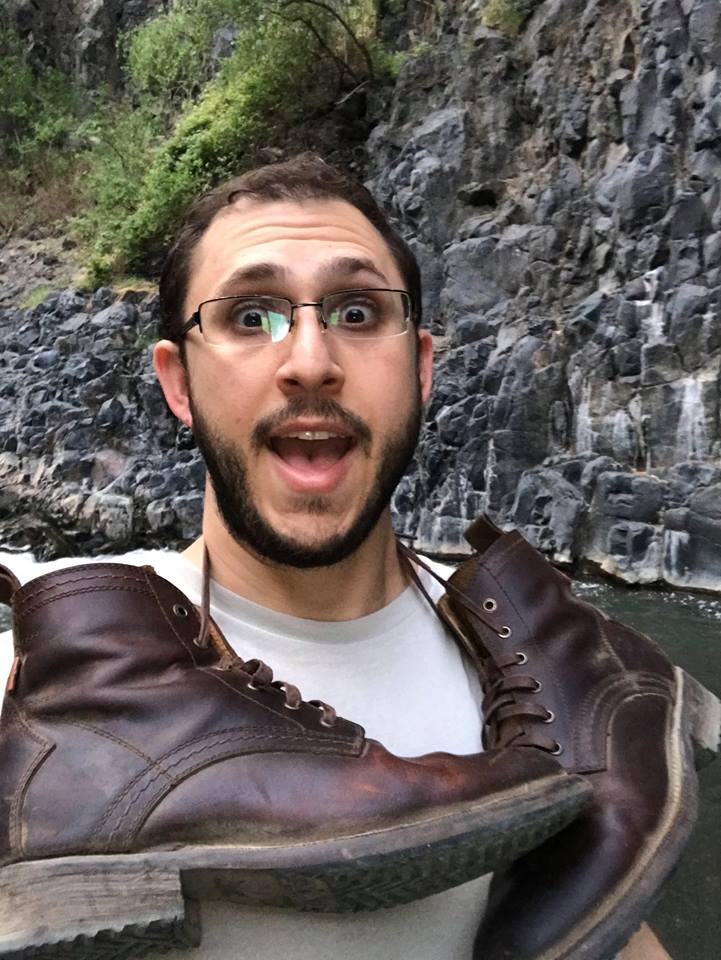
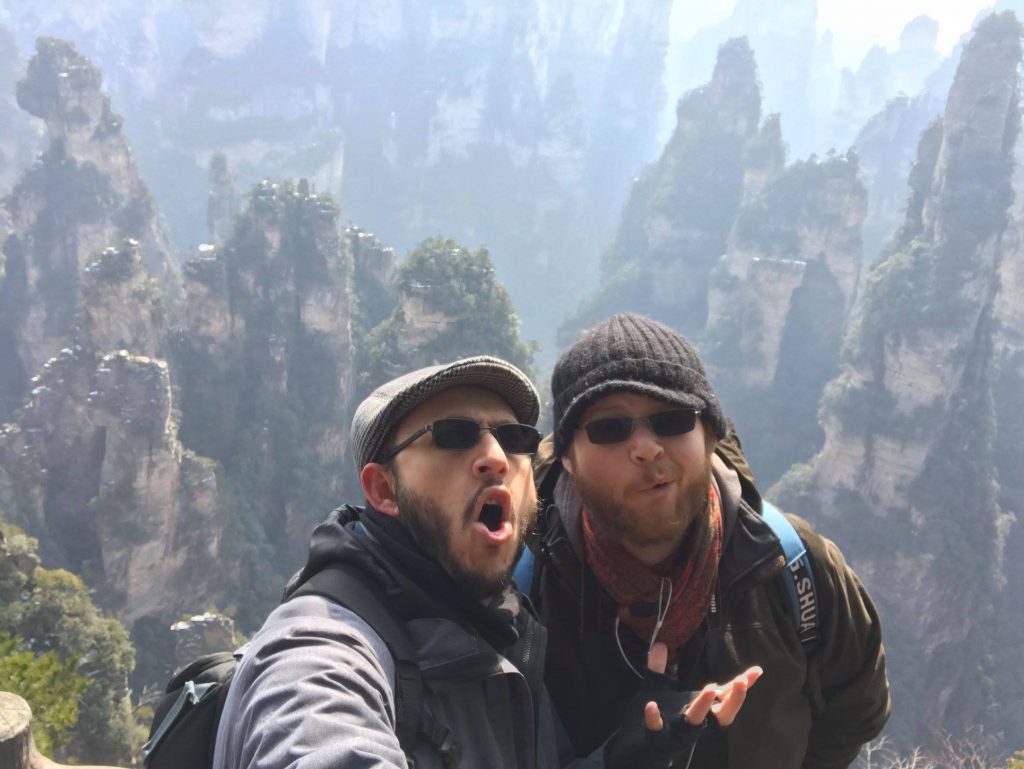
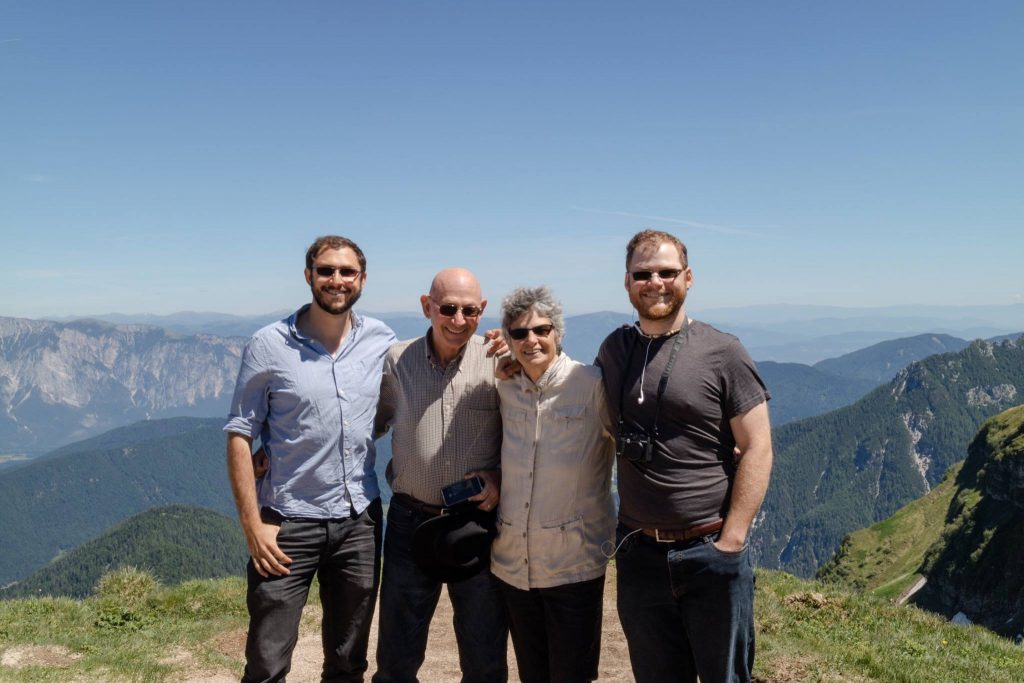
i appreciate your reflections, observations, honest comments. a pleasure to read about it all. thx for sharing.
Thank you!
What a year! It was great reading about all your transitions and growth this past year. I feel the same while switching careers and soon becoming a dad. I always learn from your reflections and sage advice. Onward into the unknown for another adventure! 🙂
Thanks Dan! So exciting to see the incredible changes you’re exploring and embracing. No small thing to chase your passion as you have, move, and to start a family. Wonderful1
Such an awesome read! I can completely relate to having trouble deciding which identity you take on next. You inevitably evolve and move on but the thought is so daunting to me!
Thanks Juan! It is for sure. But, also all about being fair with yourself, incremental growth and feeding your curiosity =)